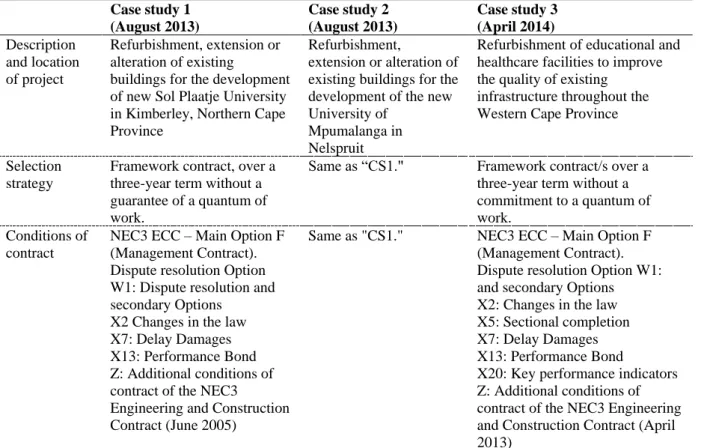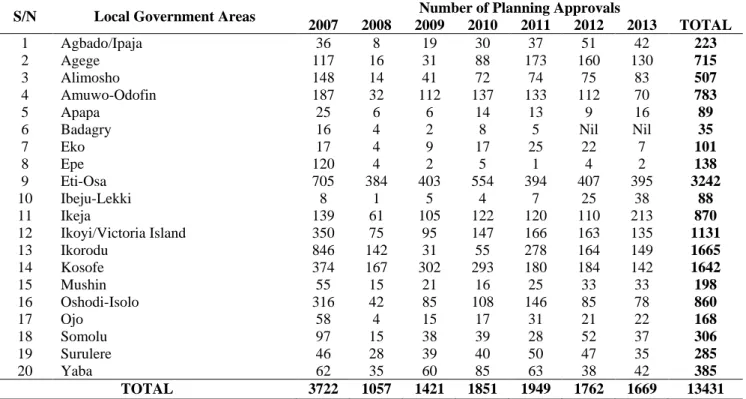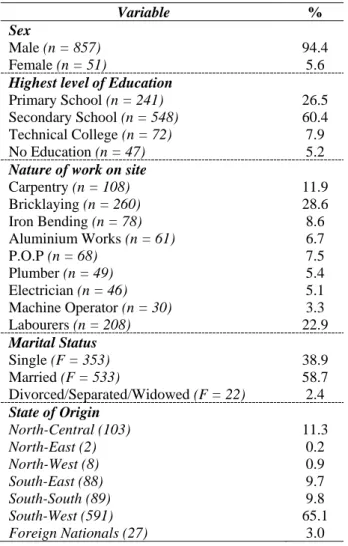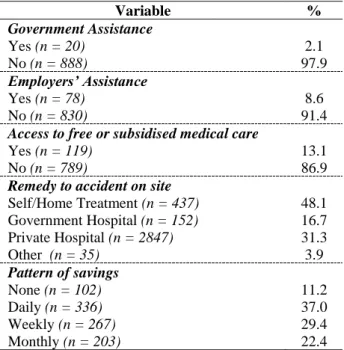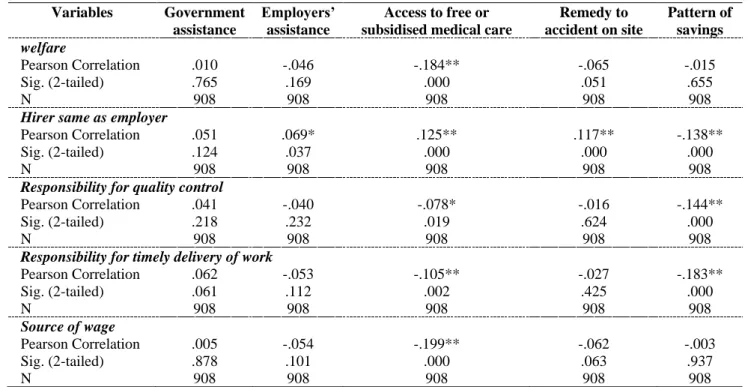The Journal is presented by the Construction Business and Management Research Group of the University of Cape Town. The distinguishing feature of the management contracting system from the traditional method is the introduction of a management contractor at the design stage of the project.
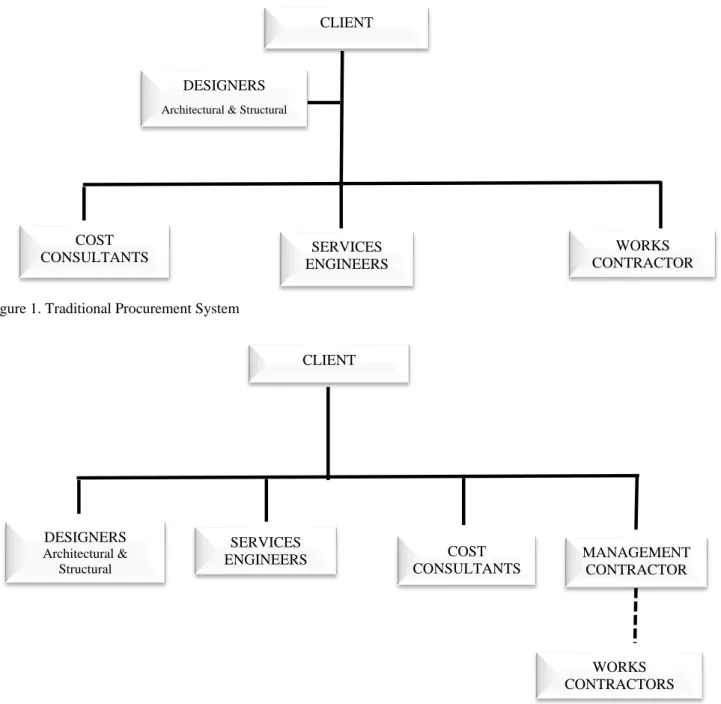
Research Methodology
Findings and Discussion
The management contractor updates scope and concept to construction drawings and the pre-construction phase. If something is not working, the management contractor should be able to come up with a solution.
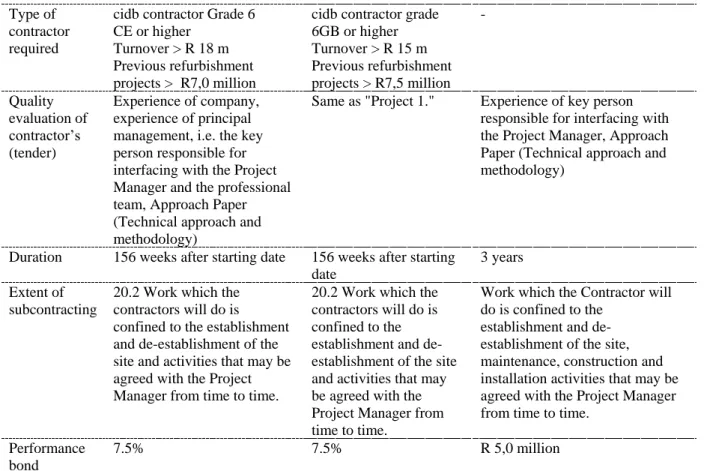
Discussion of findings
Participants were asked specific questions about the tasks performed by the management contractor and the competencies required to perform these tasks. Constructibility Assessment Tasks: Constructibility assessment tasks were considered one of the core tasks of the management contractor (Murdoch and Hughes, 2008; Sidwell, 1983).
Conclusions
This study examined the impact of subcontracting systems on the access of workers in the informal construction industry in Lagos, Nigeria to social protection measures based on a cross-sectional research design, agency theory and general employment theory. Based on the findings and the important role of subcontractors in the construction industry, it is recommended that an appropriate legislative instrument be developed to address the challenges brought by subcontracting in terms of access to social protection measures in the informal construction industry.
Introduction
However, the consequences for workers in the informal construction sector's access to social protection measures are a cause for concern. The results also show that workers in the informal construction sector perceive the provision of social protection as inadequate.
University of Cape Town
Review of Relevant Literature
Subcontracting systems and subcontractors have an important place in the construction industry (Azari-Rad, Philips & Thompson-Dawson Enshassi, Choudhry, Mayer & Shoman, 2008: 52). The issue of social protection is therefore yet to receive adequate attention in the informal building construction industry in Nigeria.
Methods
Nigeria currently spends less on social protection than many other African countries despite its relative wealth. However, as shown in this research, the problems faced by these workers are a result of the organization of the industry (Li & Peng, 2006: 15). Probability sampling technique was adopted in the process of selecting the sample size for this study to give each unit of the population equal chance of being selected (Kelley, Clark, Brown and Sitzia.
Results and Discussions
The data shows that the subcontractor hired almost half of the workers (44.6 percent), indicating that subcontractors are employers of labor in the construction industry in Lagos State. The responsibility for quality assurance and collection of wages from the subcontractor thus confirms the important roles of subcontractors in the construction industry. These findings show the social protection deficit in the informal construction industry in Nigeria.
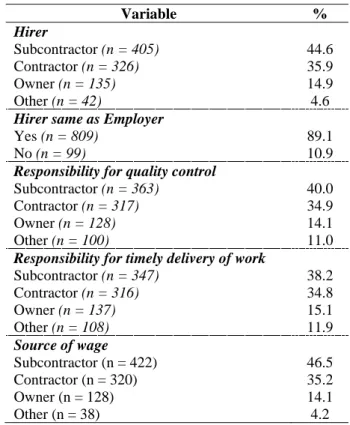
Conclusions and Recommendation
The construction industry in the twenty-first century: its image, employment opportunities and qualification requirements. Determinants of Employment in the Formal and Informal Sectors in Urban Areas of Kenya. Therefore, the bidding and procurement phase is a critical phase in the design and construction of projects because it drives the final cost, time and quality of construction projects.
Literature Review
However, there is little research on the impact of risks faced by contractors during the tendering and procurement of construction projects. Mahendra et al. have highlighted four types of risks. 2013) and are: (1) technical risks - incomplete design, inadequate specification, insufficient site investigation, change of scope, construction procedures and inadequate availability of resources, (2) construction risks - labor productivity, labor disputes, site conditions, equipment failures, design changes, high quality standard and slow technology, (3) physical risks - injuries. Project financial issues, accidents and defective plans are important types of risks in construction projects according to Iqbal et al. 2010) emphasized that the categories of risks are technical (inadequate site investigation, incomplete design, adequacy of specifications and uncertainty about the source and availability of materials), logistical risks (availability of sufficient transport capacity and availability of resources), risks related to management. (uncertain resource productivity and industrial relations issues), environmental risks (weather and seasonal effects and natural disasters) and financial risks (availability and exchange rate fluctuations, payment delays, inflation, local taxes and repatriation of funds), socio-political (constraints on availability and employment of personnel abroad, customs and import restrictions and procedures, difficulties in removing plant and equipment and insisting on the use of local companies and agents).

Methodology
Risk management according to Mahendra, et al. 2013) is in four phases – Risk identification, risk assessment, risk response planning and risk control. Risk management techniques according to Ehsan, et al. 2010) are risk identification, risk quantification, risk response development and risk response control. Therefore, this study examines the likelihood, degree of impact and likelihood of risk occurrence on construction projects in the tender and procurement phase.
Data Analysis
The reliability of the variables used in the study was tested with the Statistical Package for Social Scientists (SPSS 24), and the results of reliability statistics show that the Cronbach's Alpha for sources of risk is 0.839;. It is worth noting that risks with a high probability of occurrence and degree of impact are those that have. The implication of this result is that knowledge of the risks with the highest probabilities of occurrence will help construction organizations to guard against them and devise appropriate risk management technique to use for them.
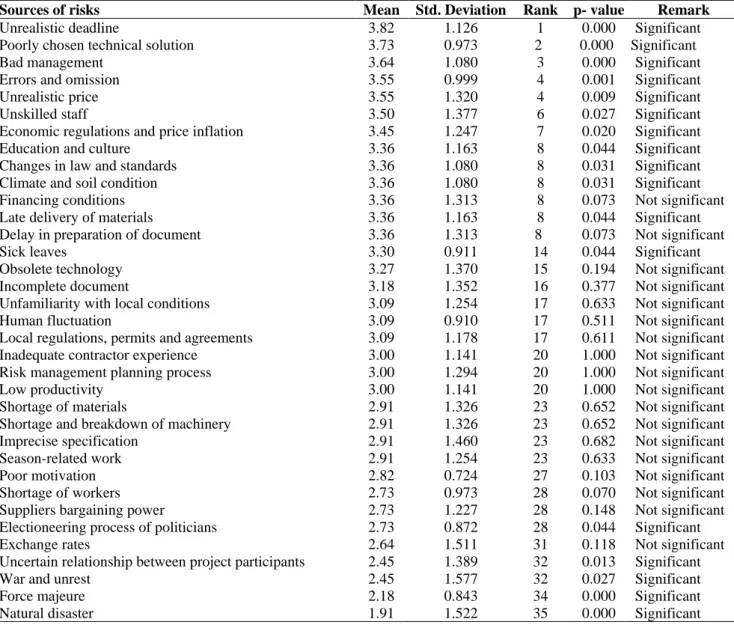
Discussion of Findings
This suggests that many of the respondents' organizations only do risk intervention and assessment while risk identification is completely neglected. The result of the study also indicates that the respondents are aware of the risk management techniques as shown in Table 5. The current order indicates that many of the respondents' organization only do risk response and assessment while risk identification is completely neglected.
Concept of BOT Mechanism
However, BOT contracts have been found to have a complex risk portfolio, leading to limitations in the award of certain concession contracts in Nigeria. This can be attributed to the use of multiple parties with different objectives (Thomas et al., 2006). This article attempts to use Pareto analysis to identify critical risk factors of BOT projects that are responsible for the higher risk impact in Nigeria.
Critical Risk Factors of BOT Projects
The result of the investigation would greatly help in improving the efficiency of privatization in public services. Garole and Jarad (2016) investigated the risk factors of road projects in India from the perspective of lenders, developers, contractors and governments. The study identified approval delays, cost overruns, construction schedule, law change, dispatch restrictions, land acquisition and compensation, contract enforceability, regulation of financial close fees and environmental risk as key risk factors.
Application of the Pareto Analysis
-40 35 changes in judgment policy and the changing nature of. 2014) noted that early project risk identification and assessment during bidding and incorporation into the bid package will assist in better estimating budgets and schedules. The study recommended a simple analytical tool for each project task that would rapidly assess risk for effective analysis. The study revealed that completion risk, inflation and price change risks have a higher impact on Chinese PPP water projects, while government corruption, imperfect legislation, supervision system and change in market demand have a lower impact on the PPP water projects in China.
Methodology
The research further indicated that the risks are mainly due to the variability of legal systems, market situations and economic environment.
Results and Findings
The profile further revealed that most of the respondents (59%) are first degree holders and 19% have either a Masters or PhD degree. The Pareto chart presented in Figure 1 was constructed using the cumulative percentage scores of the risk factors, based on the procedure outlined by Haughey (2014). From the Pareto chart, the nine highest risk factors are determined as the essential pair (20%).
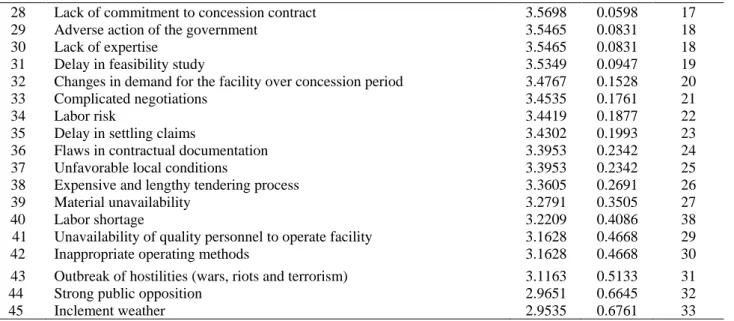
Discussion of Results
The impact of this type of risk on BOT projects in other parts of the world is evident from the study of Schaufelberger (2005). The performance of the concessionaire is decisive in the search for the fund to implement a BOT project. The ability of the company to raise capital for the BOT project is reflected in the share price.
Conclusion
Potential of South African SMME contractors in the construction sector globalizing within and beyond the SADC construction markets. This study aimed to evaluate an in-depth understanding of the capacity and ability of South Africa's SMME contractors to globalize within the SADC construction market and beyond. For example, Lockefeer (2010) noted that the potential growth of the company; proximity to potential customers; search for assets;.
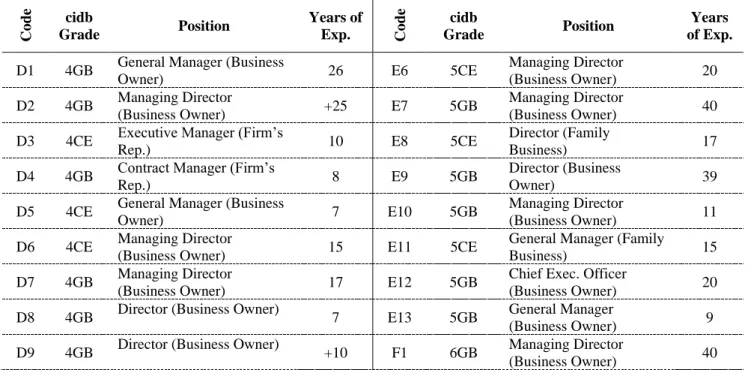
Finding and Discussion
To be honest, we haven't thought about that yet in our organization.” While another respondent (E8) explained the reasons why they are not interested in the international market as follows: “It involves a lot of risk and finance. D12); and respondent F6 explained that: “we are still in the proposal stage of going international, but we will definitely consider having foreign partners.” There are opportunities in the international construction market, but we are not yet ready to work together or form a partnership. alliance with any foreign organization.” While Respondent E8 stated: “We can only partner with foreign organizations if they are interested in working in South Africa”.
Conclusions
Finally, the study further revealed that some South African SME contractors have the potential to actively participate in the international construction market, especially in the SADC region; For example, two of the 34 construction organizations interviewed have active and successfully operating subsidiaries in Namibia and Botswana, while a handful of them showed interest in growing nationally and then globally. Evaluating the globalization readiness of medium-sized contractors in the South African construction industry. China's role in African infrastructure development Stellenbosch: Center for Chinese Studies, Stellenbosch University.
